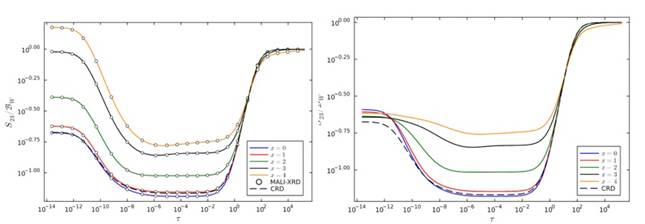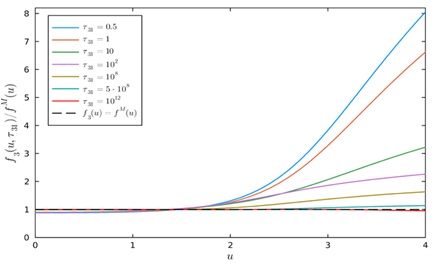A new window into the stars by modeling stellar atmosphere
A new window into the stars by modeling stellar atmosphere
In a major advance in computational astrophysics a team of scientists have developed a method to compute more realistic properties of stellar atmospheres. The method opens the door to more realistic simulations of stellar spectra — the primary tool astronomers use to decode the physical conditions in stars, circumstellar disks, and interstellar clouds.
Atmospheres of the Sun and stars are known to be a heterogeneous mixture of neutral and ionized matter immersed in a diffuse radiation field. Interaction between the matter and radiation in such an atmosphere involves several physical phenomena that directly affects both the constituents.
Though it is easy to compute their properties if we assume that they are in equilibrium, in reality, this is not so. This makes it an extremely complicated problem.
Until now, most models relied on an important simplification in which it was assumed that while atoms could deviate from equilibrium in terms of energy states, their velocities (how fast they move around) still followed a neat, predictable distribution — the Maxwellian curve that describes equilibrium. This assumption, while convenient, is not always realistic, especially for atoms in short-lived excited states.
In reality, stellar atmospheres are chaotic. Photons scatter, energy levels fluctuate, and velocity distributions can stray from the equilibrium picture. Capturing this complexity requires what astrophysicists call full non-local thermodynamic equilibrium (FNLTE) radiative transfer — a formidable problem that scientists first described back in the 1980s but couldn’t solve due to computational limitations.

Fig 1: The ‘source function’ is plotted as a function of ‘optical depth’ for various frequencies (colours). On the left is the standard approximation and on the right is the result from the new FNLTE model, showing significant differences due to incorporation of realistic conditions
FNLTE modelling allows everything to vary: the number of atoms in each energy state, their velocity distributions, and the radiation field itself. The difficulty lies in the fact that all these quantities are interdependent, creating a web of equations so complex that even powerful computers struggled to crack.
Now, a researcher at the Indian Institute of Astrophysics (IIA), working with collaborators from IRAP – Institut de Recherche en Astrophysique et Planétologie, France, has made major progress.
The team first tackled a simplified version of the FNLTE problem: the case of a two-level atom (where an atom can only jump between two energy states). Now, they’ve taken the next bold step: solving the three-level atom problem.
With three atomic levels, new types of scattering come into play, including Raman scattering — where an atom absorbs light and re-emits it at a different frequency. These processes are only approximated in standard models, but the new FNLTE approach captures them naturally.
When the team compared their FNLTE results to traditional models, the differences were striking. The velocity distribution of excited hydrogen atoms no longer followed the tidy Maxwellian curve. Instead, it showed significant departures, especially near the stellar surface — exactly where astronomers collect their spectral fingerprints of stars.

Fig 2: The deviations of the FNLTE velocity distribution of the 2nd excited level of the 3-level Hydrogen atom from the standard approximation, showing significant differences near the surface of the atmosphere of the stars.
This advance means astrophysicists are now a step closer to simulate stellar spectra with unprecedented realism. More accurate models help astronomers pinpoint the temperatures and compositions of stars more reliably, better understand the physics of circumstellar disks and molecular clouds where stars and planets form and push forward the search for Earth-like exoplanets, since decoding starlight is key to finding tiny planetary signatures.
“The major conceptual jump from two to three or more atomic levels has now been made,” said Sampoorna M from IIA, an autonomous institute of the Department of Science and Technology (DST). The team consisting of T. Lagache and F. Paletou from IRAP, Toulouse, France, and M. Sampoorna from IIA, Bengaluru is now working on generalizing the method to even more complex atoms and developing faster numerical schemes to handle the heavy computations.
Their work, published in Astronomy & Astrophysics, is a milestone in our quest to understand the stars as they truly are: messy, dynamic, and endlessly fascinating